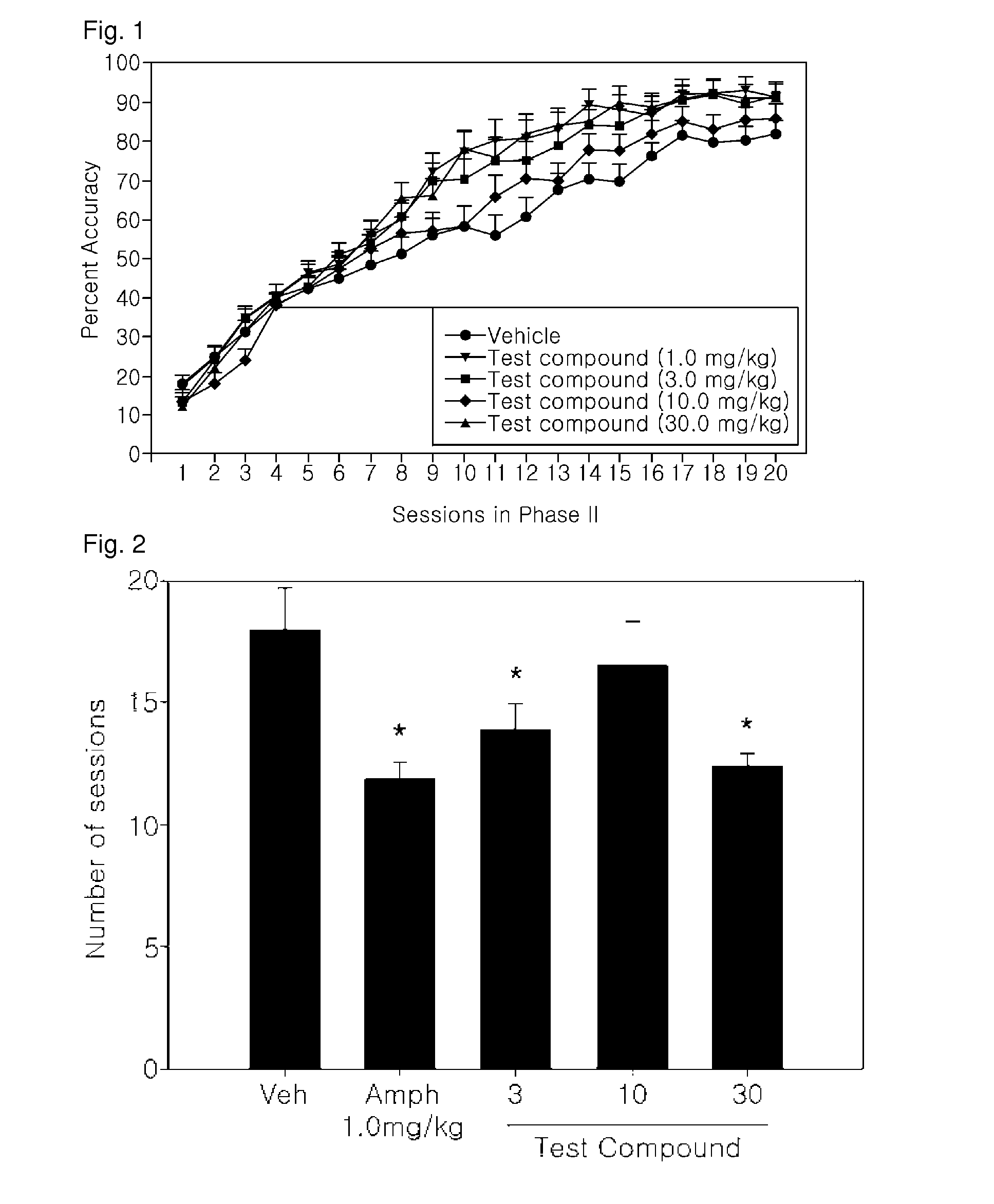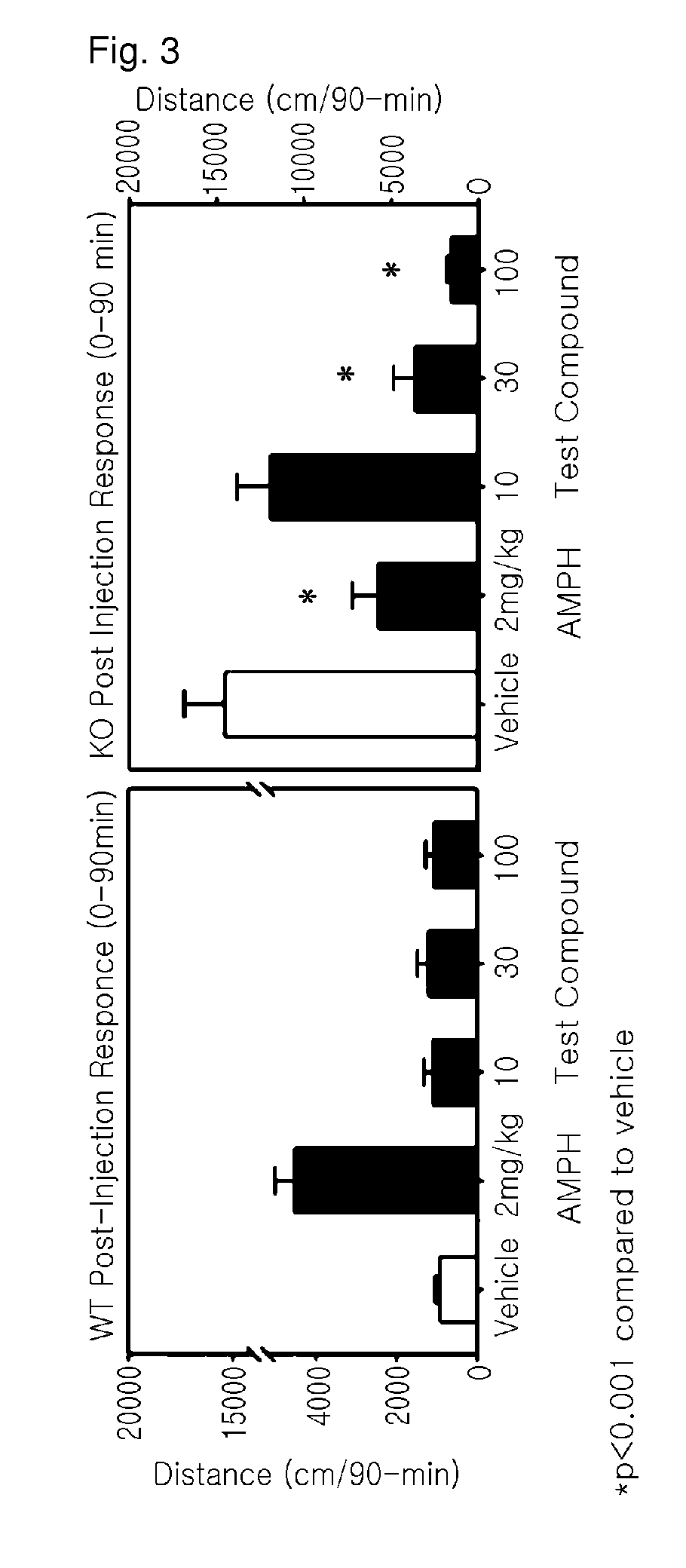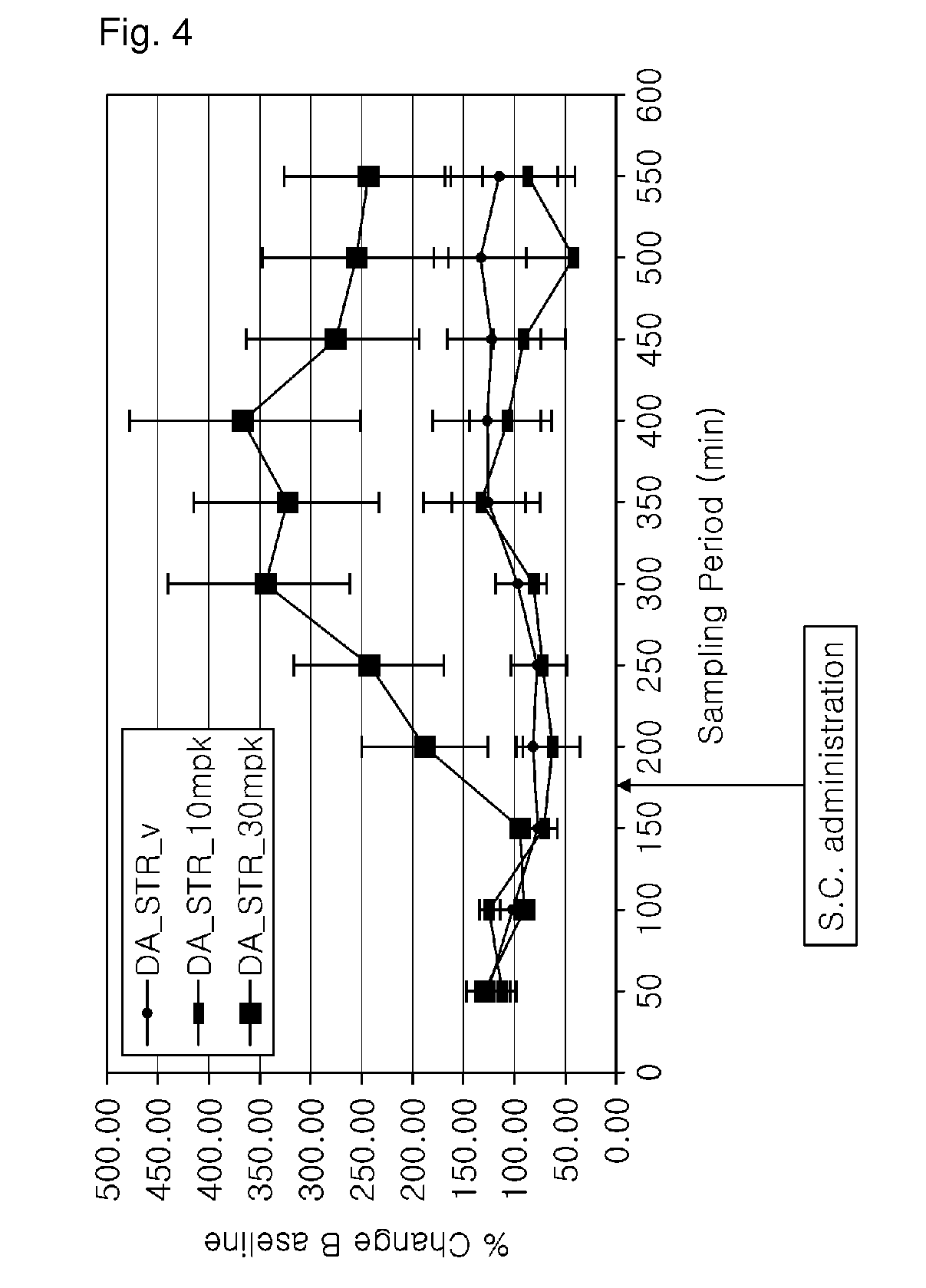Methods for treating attention-deficit/hyperactivity disorder
a technology for hyperactivity disorder and attention deficit, applied in the field of attention deficit/hyperactivity disorder (adhd), can solve the problems of high risk of cigarette smoking and substance abuse in children, affecting work or school productivity, social dysfunction and poor self-esteem of children growing up with adhd, etc., and achieves novel and unique pharmacological properties
- Summary
- Abstract
- Description
- Claims
- Application Information
AI Technical Summary
Benefits of technology
Problems solved by technology
Method used
Image
Examples
example 1
[0122]The test compound (O-carbamoyl-(D)-phenylalaninol) administered at 3, 10 or 30 mg / kg IP was examined in a behavioral experiment designed to assess behavioral performance on the reversal of a visual discrimination. Animals treated with the 3.0 or 30.0 mg / kg of test compound or with amphetamine needed fewer trials to reach criterion levels of performance and had better accuracy scores relative to rats treated with vehicle. Thus, test compound, at certain doses, does seem to enhance behavioral performance in this task similar to that achieved with d-amphetamine sulfate.
[0123](Methods)
[0124]Forty adult male Long-Evans rats (Charles River Laboratories, Wilmington, Mass.) approximately 250 g at the start of training were used as subjects in this study. Each shipment of rats went through five-day isolation prior to introduction to the general population. Rats were allowed a minimum of one additional week acclimation before operant training began.
[0125]Test compound was dissolved in s...
example 2
[0135]The test compound administered at 10, 30 and 100 mg / kg subcutaneously (SC) was assessed to determine the influence on spontaneous activity of wild-type and homozygous mutant dopamine transporter knockout (KO) mice that bear some similarities to patients diagnosed with ADHD. The test compound selectively reduced activity of the KO mice in a dose-dependent manner suggesting that the test compound was high efficacious in depressing hyperactivity in dopamine transport KO mice.
[0136](Methods)
[0137]Male and female wild-type and homozygous mutant dopamine transporter KO mice (n˜10 mice / genotype / agent) were tested for spontaneous activity in the open field following a single injection of the vehicle or compound. Mice were placed into the open field for 30 min and administered SC the vehicle (sterile water), 2 mg / kg amphetamine, or three concentrations of the test compound (10, 30, 100 mg / kg). All drugs were given in a volume of 5 mL / kg. Animals were returned to the open field for an a...
example 3
[0141]The test compound was tested for binding to the dopamine, norepinephrine and serotonin transporters and for the effects on dopamine, norepinephrine and serotonin reuptake. The test compound showed weak binding to the dopamine and norepinephrine transporter and weak effects on dopamine and norepinephrine reuptake compared to cocaine.
[0142](Methods)
[0143]Unknowns were weighed and dissolved in DMSO to make a 10 or 100 mM stock solution. An initial dilution to 50 or 500 μM in assay buffer for binding, or to 1 or 10 mM in assay buffer for uptake, was made. Subsequent dilutions were made with assay buffer supplemented with DMSO, maintaining a final concentration of 0.1% DMSO. Pipetting was conducted using a Biomek 2000 robotic workstation.
[0144]Concentrations of Test Compound tested
[0145]Assay Concentration Range
[0146]Binding:
[0147]hDAT 21.6 nM-100 μM
[0148]hSERT 21.6 nM-100 μM
[0149]hNET 21.6 nM-10 μM
[0150]Uptake:
[0151]hDAT 31.6 nM-10 μM
[0152]hSERT 31.6 nM-100 μM
[0153]hNET 31.6 nM-10...
PUM
| Property | Measurement | Unit |
|---|---|---|
| weight | aaaaa | aaaaa |
| time | aaaaa | aaaaa |
| diameter | aaaaa | aaaaa |
Abstract
Description
Claims
Application Information
 Login to View More
Login to View More - R&D
- Intellectual Property
- Life Sciences
- Materials
- Tech Scout
- Unparalleled Data Quality
- Higher Quality Content
- 60% Fewer Hallucinations
Browse by: Latest US Patents, China's latest patents, Technical Efficacy Thesaurus, Application Domain, Technology Topic, Popular Technical Reports.
© 2025 PatSnap. All rights reserved.Legal|Privacy policy|Modern Slavery Act Transparency Statement|Sitemap|About US| Contact US: help@patsnap.com



